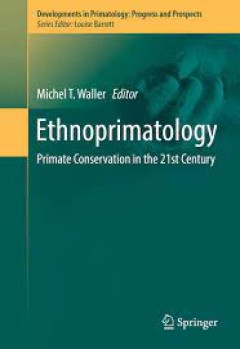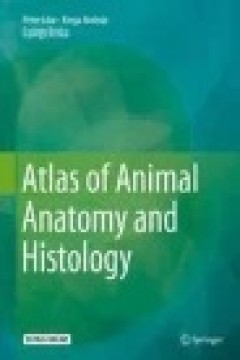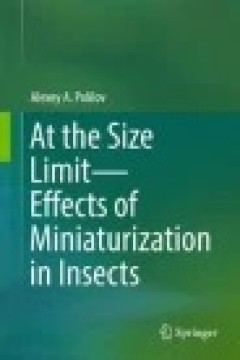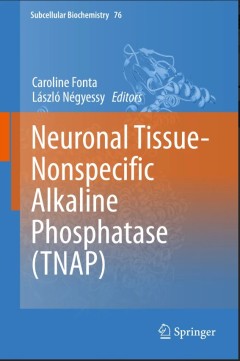Filter by

Ethnoprimatology Primate Conservation in the 21st Century
The list of challenges facing nonhuman primates in the 21st century is a long one. The expansion of palm oil plantations to feed a growing consumer class is eating away at ape and monkey habitats in Southeast Asia and Central Africa. Lemurs are hunted for food in the poorest parts of Madagascar while monkeys are used as medicine in Brazil. Traditional cultural beliefs are maintaining demand for…
- Edition
- -
- ISBN/ISSN
- 978-3-319-30469-4
- Collation
- 35 b/w illustrations, 31 illustrations in colour
- Series Title
- -
- Call Number
- -

Atlas of Animal Anatomy and Histology
This atlas presents the basic concepts and principles of functional animal anatomy and histology thereby furthering our understanding of evolutionary concepts and adaptation to the environment. It provides a step-by-step dissection guide with numerous colour photographs of the animals featured. It also presents images of the major organs along with histological sections of those organs. A wide …
- Edition
- -
- ISBN/ISSN
- 978-3-319-79745-8
- Collation
- XV, 413
- Series Title
- -
- Call Number
- 571.3

At the Size Limit - Effects of Miniaturization in Insects
This book addresses microinsects, their structure and their differences from larger relatives. Moreover, it discusses structural changes that accompany extreme diminution in living organisms, evolutionary inventions that help insects to live in the microworld, and factors that limit the size of animals. It also takes a careful look at the potential benefits of the study of microinsects for solv…
- Edition
- -
- ISBN/ISSN
- -
- Collation
- X, 325
- Series Title
- -
- Call Number
- 571.3

Neuronal Tissue-Nonspecific Alkaline Phosphatase (TNAP)
Phosphatases, such as TNAP are fundamental in regulating the roles of cellular, and consequently numerous body functions. TNAP is a ubiquitous enzyme with a wide spectrum of substrates and specificity. Regulation at the cellular level and the lack of TNAP activity is a lethal condition. Recent findings of a highly specific regional, laminar and subcellular localization of TNAP in the cerebral c…
- Edition
- 1
- ISBN/ISSN
- XXII, 395
- Collation
- XXII, 395
- Series Title
- Subcellular Biochemistry
- Call Number
- -

Natural Mycotoxin Contamination in Humans and Animals
This book presents a review of the existing literature on natural mycotoxins to create a comprehensive reference for mycotoxin levels. Each entry includes contamination, concentration rate, mostly mean mycotoxin concentration of organs (human and animal) and country of origin of the sample. Due to the serious spoilage and health issues the presence of mycotoxins can cause, it is imperative tha…
- Edition
- 1
- ISBN/ISSN
- 978-3-319-16039-9
- Collation
- XXVIII, 360
- Series Title
- -
- Call Number
- -

The Tree Shrew (Tupaia belangeri chinensis) Brain in Stereotaxic Coordinates
This atlas is currently the most systematic and comprehensive atlas of the tree shrew brain. The purpose of this book is to help scientists acquire accurate coordinates of the brain regions of the tree shrew, which is becoming a popular animal model for a variety of human diseases. This atlas contains series of 192 coronal sections, 36 sagittal sections, and 49 horizontal sections using Nissl s…
- Edition
- -
- ISBN/ISSN
- 978-981-10-0611-1
- Collation
- -
- Series Title
- -
- Call Number
- -

The Science of Human Evolution
This textbook provides a collection of case studies in paleoanthropology demonstrating the method and limitations of science. These cases introduce the reader to various problems and illustrate how they have been addressed historically. The various topics selected represent important corrections in the field, some critical breakthroughs, models of good reasoning and experimental design, and im…
- Edition
- -
- ISBN/ISSN
- 978-3-319-41585-7
- Collation
- -
- Series Title
- -
- Call Number
- -

Animal Rights Activism A Moral-Sociological Perspective on Social Movements
We’re in an era of ever increasing attention to animal rights, and activism around the issue is growing more widespread and prominent. In this volume, Kerstin Jacobsson and Jonas Lindblom use the animal rights movement in Sweden to offer the first analysis of social movements through the lens of Emile Durkheim’s sociology of morality. By positing social movements as essentially a moral phen…
- Edition
- -
- ISBN/ISSN
- -
- Collation
- -
- Series Title
- -
- Call Number
- -

Animals and Inequality in the Ancient World
Animals and Inequality in the Ancient World explores the current trends in the social archaeology of human-animal relationships, focusing on the ways in which animals are used to structure, create, support, and even deconstruct social inequalities. The authors provide a global range of case studies from both New and Old World archaeology—royal Aztec dog burial, the monumental horse tombs of C…
- Edition
- -
- ISBN/ISSN
- -
- Collation
- -
- Series Title
- -
- Call Number
- -

Animal Rights Activism A Moral-Sociological Perspective on Social Movements
We’re in an era of ever increasing attention to animal rights, and activism around the issue is growing more widespread and prominent. In this volume, Kerstin Jacobsson and Jonas Lindblom use the animal rights movement in Sweden to offer the first analysis of social movements through the lens of Emile Durkheim’s sociology of morality. By positing social movements as essentially a moral phen…
- Edition
- -
- ISBN/ISSN
- 9789048525485
- Collation
- -
- Series Title
- -
- Call Number
- -
 Computer Science, Information & General Works
Computer Science, Information & General Works  Philosophy & Psychology
Philosophy & Psychology  Religion
Religion  Social Sciences
Social Sciences  Language
Language  Pure Science
Pure Science  Applied Sciences
Applied Sciences  Art & Recreation
Art & Recreation  Literature
Literature  History & Geography
History & Geography